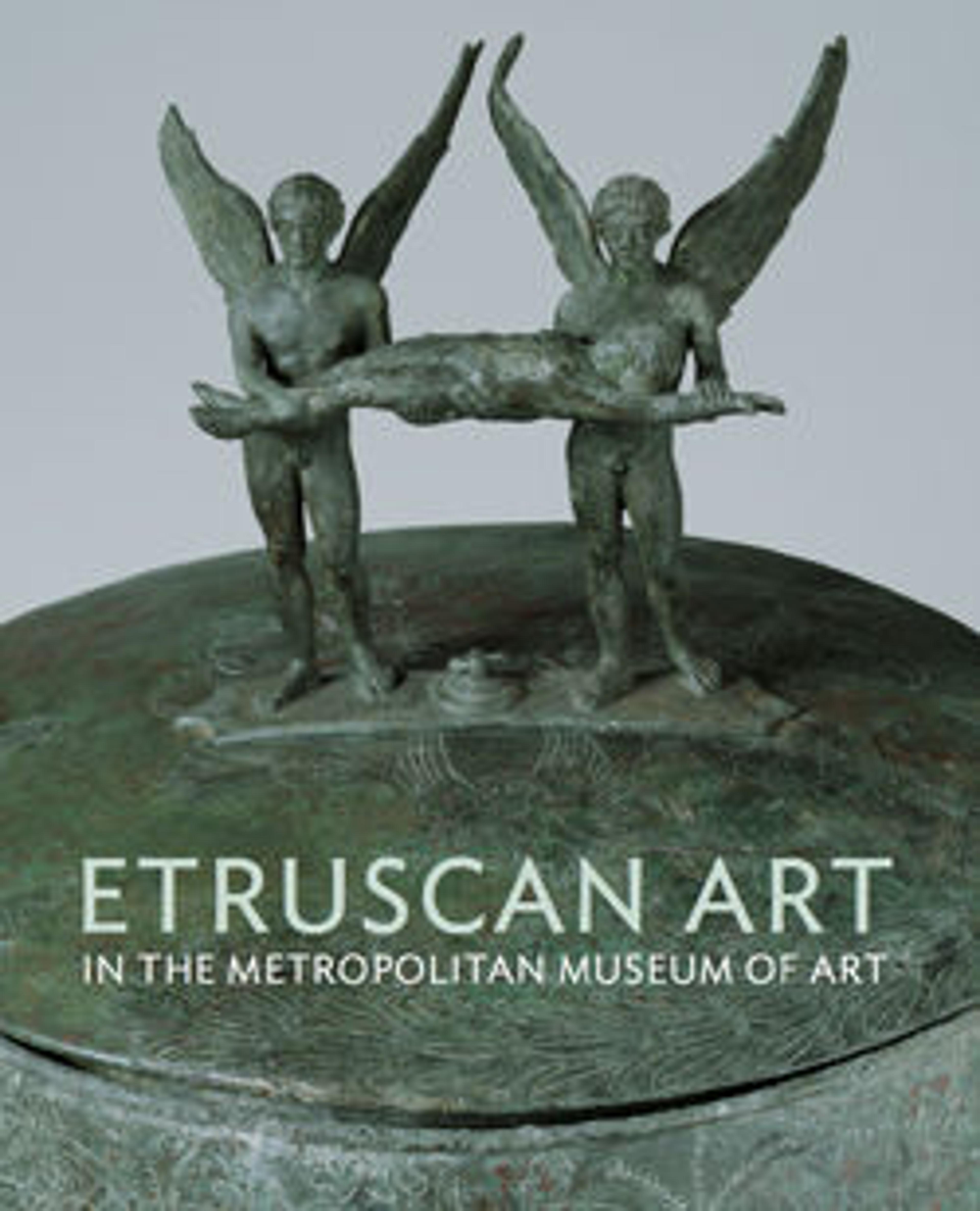Set of jewelry
The tomb group represents one of the richest and most impressive sets of Etruscan jewelry ever found. It comprises a splendid gold and glass pendant necklace, a pair of gold and rock-crystal disk earrings, a gold dress fastener (fibula) decorated with a sphinx, a pair of plain gold fibulae, a gold dress pin, and five finger rings. Two of the rings have engraved scarabs that revolve on a swivel bezel; one is decorated with embossed satyr heads, and the other two have decorated gold bezels.
Artwork Details
- Title: Set of jewelry
- Period: Late Archaic
- Date: early 5th century BCE
- Culture: Etruscan
- Medium: Gold, glass, rock crystal, agate, carnelian
- Dimensions: Length (L. of necklace): 14 3/16 in. (36 cm)
Diameter (D. of disks): 2 3/8 in. (6.1 cm)
Length (L. of fibula): 1 15/16 in. (5 cm)
Length (L. of fibulae): 1 5/8 in. (4.1 cm)
Length (L. of pin): 2 7/8 in. (7.3 cm)
Diameter (D. of ring with youth intaglio): 7/8 in. (2.2 cm)
Diameter (D. of ring with Herakles intaglio): 15/16 in. (2.4 cm)
Diameter (D. of ring with bird intaglio): 1 1/16 in. (2.7 cm)
Diameter (D. of plain ring 31/32): 15/16 in. (2.5 cm)
Diameter (D. of ring with lion intaglio): 7/8 in. (2.2 cm) - Classification: Gold and Silver
- Credit Line: Harris Brisbane Dick Fund, 1940
- Object Number: 40.11.7–.18
- Curatorial Department: Greek and Roman Art
Audio
1216. Set of Jewelry
0:00
0:00
We're sorry, the transcript for this audio track is not available at this time. Please email info@metmuseum.org to request a transcript for this track.
More Artwork
Research Resources
The Met provides unparalleled resources for research and welcomes an international community of students and scholars. The Met's Open Access API is where creators and researchers can connect to the The Met collection. Open Access data and public domain images are available for unrestricted commercial and noncommercial use without permission or fee.
To request images under copyright and other restrictions, please use this Image Request form.
Feedback
We continue to research and examine historical and cultural context for objects in The Met collection. If you have comments or questions about this object record, please contact us using the form below. The Museum looks forward to receiving your comments.
